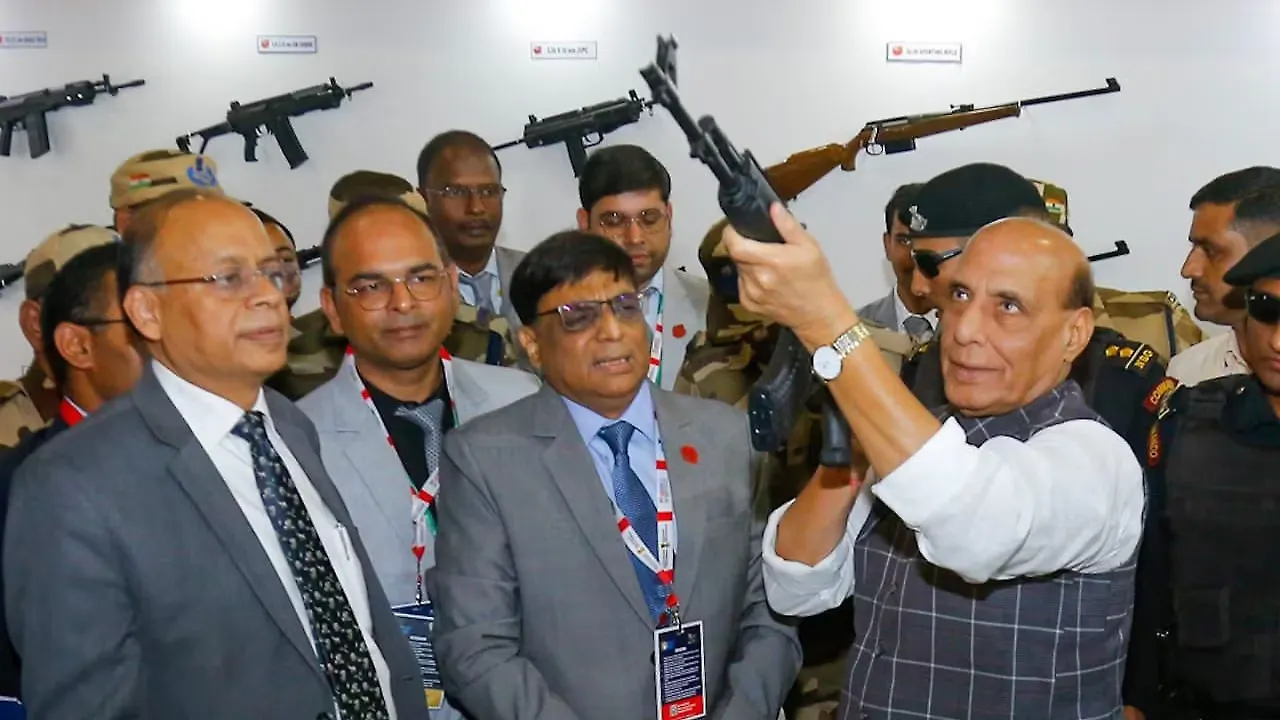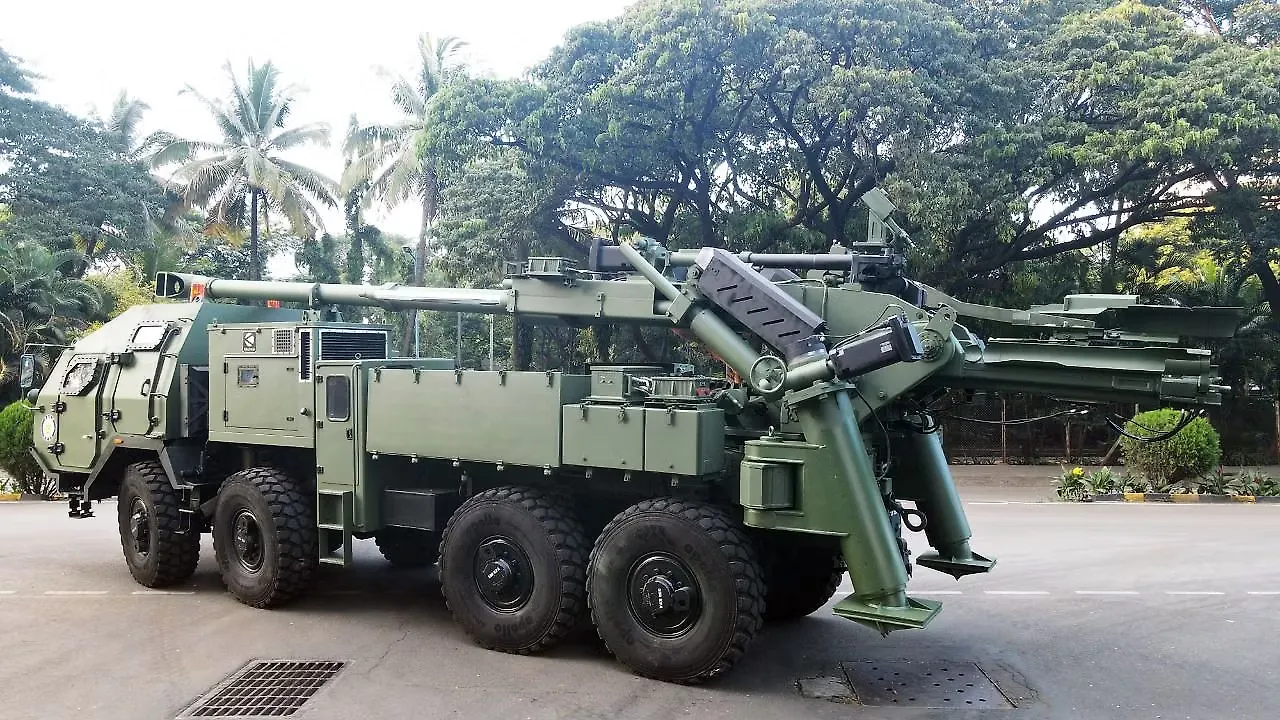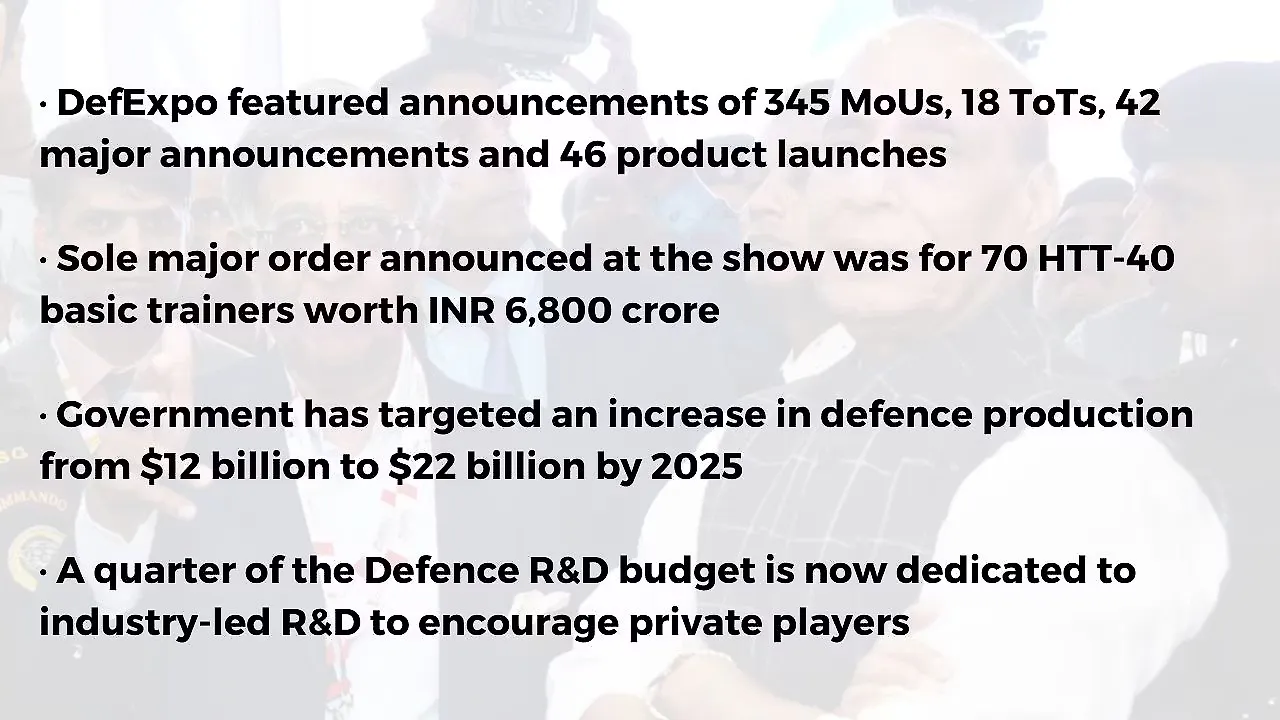
It has taken a long time coming, but India’s private sector defence industry finally has the Government support it lacked for decades. Defence Public Sector Units (DPSU) and the Indian industry put on a strong show in Gandhinagar, with the latter presenting a wide range of defence systems and platforms, showcasing the dramatic strides made in the last few years.
“India has embarked on a journey of self-reliance of R&D in defence. Private sector will play a crucial role in taking us to the destination. Both public and the private sectors are the wheels with which the R&D vehicle will move towards complete self-reliance. With collaborative efforts of the Government and the industry, we will realise the Prime Minister’s vision of ‘Make in India, Make for the World’,” Defence Minister Rajnath Singh said while addressing the seminar ‘Aatmanirbharta in Defence R&D - Synergistic Approach’ organised by the Defence Research & Development Organisation (DRDO).
Singh said this is a golden period for the Indian defence industry, which will be a sunrise sector in the future. He added that the Government has set the target of increasing defence production from $12 billion to $22 billion by 2025. This will provide unparalleled opportunities to grow India’s indigenous defence industry in the coming years. The Government has reserved 68% of the defence capital acquisition for domestic procurement for the year 2022-23 to increase the participation of domestic industry in the defence sector. This would be worth approximately INR 85,000 crore, and 25% of this (INR 21,250 crore) has been reserved for domestic private industry. A quarter of the Defence R&D budget has also been dedicated to industry-led R&D to encourage private players.
Addressing a seminar jointly organised by the US-India Business Council (UIBC) and the Society of Indian Defence Manufacturers (SIDM) at DefExpo, Singh stated that the Indian defence industry has witnessed transformative changes over the last eight years through progressive reforms. “The main objective is to fulfil the requirements of the Indian Armed Forces; at the same time, create long-term linkages to the global supply chains of the foreign OEMs to meet global demands. Through these linkages, India looks forward to collaborating for a secure and resilient global supply chain for the free world to ensure uninterrupted and reliable access to defence equipment and other strategic materials for our nation and our partners, including the US. As India’s defence base grows, private sector companies from the US can explore the vast potential for ‘Creating in India’ and ‘Exporting from India’.”

Singh added that the flight of an ‘Aatmanirbhar Defence’ depended on the two wings of industry, manufacturers and supply on one hand and armed forces, users and demand on the other. With strong Government backing for its defence export target of INR 35,000 crore by 2025, the Indian industry is now also targeting foreign markets for its products.
Opportunities Galore
A total of 451 Memoranda of Understanding (MoU), Transfer of Technology (ToT) agreements and product launches took place during the Bandhan ceremony at DefExpo. These included 345 MoUs, 18 ToTs, 42 major announcements and 46 product launches. The sole major order announced at the show was the INR 6,800 crore order awarded to Hindustan Aeronautics Limited (HAL) for the HTT-40 Basic Trainer Aircraft (BTA).
While addressing a seminar at the exhibition, the Chief of Defence Staff, General Anil Chauhan, informed attendees that contracts worth INR 62,000 crore have already been signed, and orders worth about INR 700,000 crore are under various stages of procurement with the Indian Defence industry. The Indian Air Force also has huge opportunities that will be available to the industry for indigenous networking infrastructure, which is critical to security, and 62,000 lines are likely to be available for indigenisation in the next ten years. The Army modernisation effort will also provide major opportunities in coming years, and two systems which are needed urgently are related to Man-Portable Anti-Tank Guided Missiles and Very Short-Range Missile systems, along with the need for small arms systems.

The Director General (Acquisition), MoD, stated at DefExpo that the procurement process is being overhauled, and an Acceptance of Necessity (AoN) bank of $50 billion is in the process of development and will be completed in one year. An AoN is an initial acceptance from the MoD to proceed with a defence acquisition procurement need.
An emerging player in the Indian private sector defence industry, Adani Defence & Aerospace projected investments to the tune of INR 5,000 crore in priority areas of information processing, AI/ML, Unmanned systems etc. It also invests in the UP Defence Industrial Corridor to set up an ammunition facility. SAAB India also announced that it plans to commence production launchers with an Indian partner by 2024.
Singh invited US companies to create manufacturing units in India and develop technology collaborations with Indian industries to create a global supply chain. “We are delighted to work with US, our valued partner, to strengthen our commercial and strategic relationship and to attract US investment for creating a high-technology defence production ecosystem in India. For India, collaboration with US companies would be an important strategic force multiplier, apart from being wealth and job creator,” he said.
The US defence firm Lockheed Martin has plans to establish MRO and Multi-Role Fighter Aircraft facilities in the country and integrate Indian companies into its global supply chain for platforms such as the C-130J transport aircraft, MH-60R maritime helicopter and the F-21 fighter aircraft. Indian industry will also be part of an agreement under the India-US Defence Technology and Trade Initiative to co-develop air-launched UAVs and explore opportunities in additional DTTI projects, such as counter unmanned aerial systems and an Intelligence, Surveillance, Target Acquisition and Reconnaissance (ISTAR) platform.

From Public to Private
While the DPSUs such as Hindustan Aeronautics Limited (HAL) and Bharat Electronics Limited (BEL) or the DRDO has developed their defence platforms with funding from the Government, the private sector defence industry is still some time away from developing their platforms such as armoured personnel carriers, large drones, light tanks, etc. The DRDO has developed indigenous weapons systems such as the Akash Surface-to-Air Missile system and Pinaka Multi-Barrel Rocket Launcher (MBRL) with the private sector industry as production partners.
An important new weapons system unveiled at the show was Kalyani Group’s Mounting Artillery Gun System 8X8 High Mobility Vehicle (HMV). The MGS 8x8 is a 155mm/52cal mounted artillery gun system mounted on a BEML Tatra 8X8 chassis. Bharat Forge and Tata Advanced Systems Limited (TASL) are the development and production partners for the 155mm/52cal Advanced Towed Artillery Gun System (ATAGS), which has been indigenously developed by DRDO and is now being mounted on HMV chassis.
Growing private sector defence industry participation in Government funded defence programmes such as the Light Combat Aircraft ‘Tejas’ and HAL’s helicopter programmes will further aid them in climbing up the value chain. At DefExpo, HAL’s LCA Tejas Division inked MoUs with Lakshmi Machine Works (LMW) and VEM Technologies and Larsen & Toubro to manufacture 40 sets of air intake assemblies, 20 sets of centre fuselage assemblies and 22 sets of wing assemblies for the LCA Tejas MK1A aircraft.
DefExpo 2022 has set the tone for the increased participation of the Indian private sector industry in establishing a defence manufacturing ecosystem at home. However, the success of this initiative is the timely conclusion of defence procurements and sufficient order volumes to ensure economies of scale.
Also Read:
iDEX Steals The Limelight At DefExpo
DRDO Showcases Recent Advancements In Defence Technologies